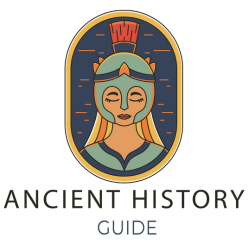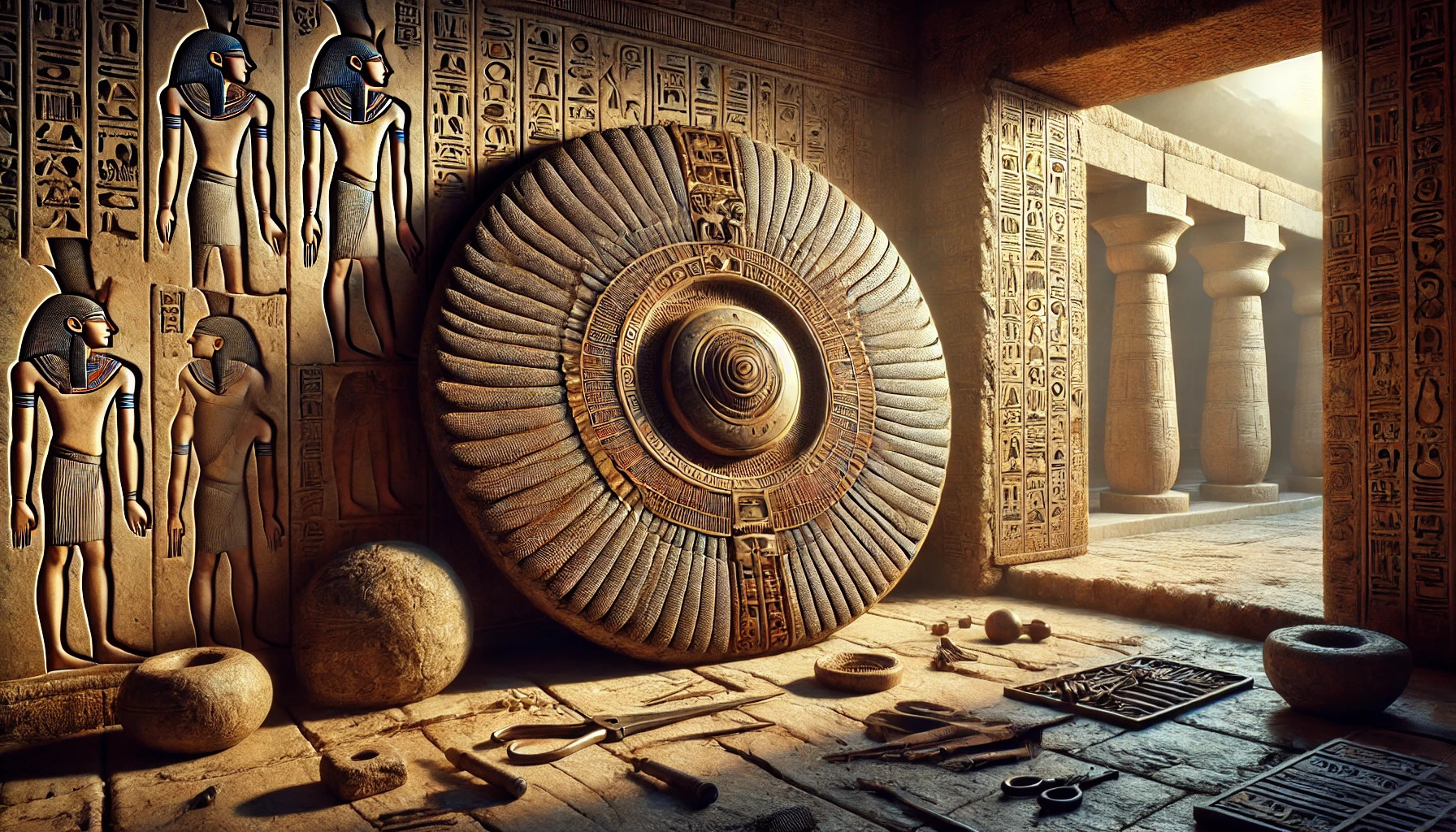The Sabu Disk is a fascinating artifact from ancient Egypt that has puzzled historians and archaeologists for decades. Dating back to around 3000 to 2800 BC, this disk was discovered in the tomb of an official named Sabu at the Saqqara necropolis. Its unique design and uncertain purpose make it a significant piece for understanding the craftsmanship and cultural practices of early Egyptians.
Many theories exist about the Sabu Disk’s function, ranging from religious rituals to practical usage in daily life. The remarkable stone craftsmanship reflects the advanced skills of ancient artisans, showcasing their ability to create intricate designs. People are drawn to the mystery surrounding this disk, as it provides a glimpse into the lives of those who lived thousands of years ago.
Unveiling the Mystery: What Is the Sabu Disk?
The Sabu Disk is a fascinating artifact from ancient Egypt that captures the interest of historians and archaeologists alike. It is known for its unique features and unknown purpose, making it a subject of much speculation and study.
Archaeological Discovery and Origin
The Sabu Disk was discovered in 1936 by British Egyptologist Walter Bryan Emery. It was found in the Saqqara necropolis, specifically in mastaba S3111, the tomb of an ancient official named Sabu. This area is known for many significant archaeological finds from the First Dynasty, around 3000 to 2800 BC.
The discovery of the disk brought attention to the advanced craftsmanship of the time. Despite being over 5,000 years old, it shows remarkable skill in stone working. Since its discovery, the disk has remained a topic of ongoing research and debate regarding its use and symbolism in ancient Egyptian culture.
Physical Description and Material Composition
The Sabu Disk is notable for its distinctive lobed shape. Made of a type of sandstone, it measures about 61 centimeters in diameter. The surface of the disk exhibits intricate carvings, although their meanings remain unclear.
This unique design sets the disk apart from other artifacts. The material composition indicates that it was crafted with care and precision, highlighting the abilities of ancient Egyptian artisans. Many believe that the disk may have had a ceremonial or ritualistic purpose, but its exact role continues to puzzle experts.
Theoretical Functions of the Sabu Disk
Several theories exist regarding the functions of the Sabu Disk. These interpretations range from its use as a ceremonial object to its possible role as a technological instrument. Additional debates explore other potential purposes that highlight its significance in ancient Egyptian culture.
Ceremonial Object Hypothesis
One theory suggests that the Sabu Disk served as a ceremonial object. Its unique design and careful craftsmanship point to its importance in rituals. Ancient Egyptians often used special items in worship and ceremonies to connect with their gods.
The disk’s presence in the tomb of Prince Sabu also supports this idea. Items placed in royal tombs were often meant to accompany the deceased into the afterlife. The significance of the disk in ceremonial practices can reflect the spiritual beliefs of the time.
Technological Instrument Theory
Another theory posits that the Sabu Disk may have been a technological instrument. Its distinct lobed shape raises questions about its possible functions in ancient engineering or agriculture. Some suggest it could have been used for specific tasks, such as grinding or lifting.
The dimensions of the disk also align with tools from similar periods. This has led some researchers to explore its practical applications. If it did serve a practical function, it might have played a significant role in daily life or industry.
Other Interpretations and Debates
Beyond these major theories, other interpretations and debates about the Sabu Disk exist. Some scholars argue it was a decorative piece, while others believe it held astrological significance related to the stars and cosmos.
The uniqueness of the disk, unmatched by other artifacts, fuels ongoing discussions. Each theory sheds light on different aspects of ancient Egyptian life. This rich variety of interpretations contributes to the mystique surrounding the Sabu Disk.
Cultural Significance in Ancient Egypt
The Sabu Disk holds an intriguing place in ancient Egyptian culture. Its potential symbolism, role in practices, and connection to cosmology highlight its importance in understanding the beliefs and values of the time.
Symbolism in Egyptian Mythology
In Egyptian mythology, symbols convey deep meanings and values. The Sabu Disk may represent the solar disc, which signifies the sun god Ra. Ra was a vital deity, representing light and creation. The round shape of the disk aligns with how the sun is commonly depicted.
This connection with Ra suggests that the disk could have been used in rituals or as a protective symbol. Many artifacts from this period carry meanings tied to the gods, highlighting the Egyptians’ spiritual life and beliefs. The Sabu Disk may have served as more than just an object; it could embody divine protection or cosmic order.
Sabu Disk’s Role in Religious Practices
Religious practices in ancient Egypt often included items that held sacred meanings. The Sabu Disk could have played a role in funerary rituals linked to the tomb of Prince Sabu. Such artifacts were believed to assist the deceased on their journey to the afterlife.
During ceremonies, the disk might have been placed alongside other significant items to honor the dead. It may also have signified a connection to the divine, providing the deceased with protection and guidance. The careful crafting of the disk demonstrates the artistry and spirituality of ancient Egyptian artisans, who designed objects to fulfill religious needs.
Relation to Ancient Egyptian Cosmology
The ancient Egyptians had a complex understanding of the universe. Their cosmology included ideas about the earth, sky, and the afterlife, all of which were vital to their culture. The Sabu Disk’s circular shape may symbolize the cycles of life and death.
Some scholars believe that the disk reflects the Egyptians’ view of the cosmos, connecting daily life with the divine. It may represent the horizon, where the sun rises and sets, marking time and celestial events. Such connections illustrate how the Egyptians integrated their beliefs about the cosmos into their daily lives and practices. The Sabu Disk, therefore, serves as a link between earthly existence and the higher powers they worshipped.
Artistic Representations and Iconography
The Sabu Disk has intrigued researchers not just for its shape and material but also for its artistic representations in ancient Egyptian culture. It appears in various forms within tomb art and carries symbolic meanings, reflecting the beliefs and values of the era. Additionally, its representation alongside other artifacts enhances its significance.
Depiction in Tomb Art and Hieroglyphs
The Sabu Disk is sometimes seen in tomb paintings, often associated with ceremonial practices. Artistic renditions in tombs suggest it may have had a ritualistic function. These depictions often include offerings and ceremonial objects, hinting at the disk’s role in religious rituals.
Hieroglyphs near these artifacts sometimes allude to energy or movement, reinforcing theories about the Sabu Disk’s use as a tool or ceremonial object. The intricate designs on the disk may also reflect the skills and artistry of ancient craftsmen.
Comparative Study of Related Artifacts
When examining the Sabu Disk, it’s essential to compare it with similar artifacts from the same period. Objects like the Egyptian Tri-Lobed Disc share design features and have raised questions about their purpose.
These comparisons help researchers understand how ancient Egyptians thought about technology and symbols. They may indicate advanced craftsmanship and suggest a shared cultural significance amongst these artifacts, pointing to a deeper understanding of ancient Egyptian society. The similarities also spark debates about the technological capabilities of the civilization during that time.
Contemporary Interpretations and Influence
The Sabu Disk continues to inspire and provoke thought in modern contexts. Its design and potential uses have sparked interest across various fields, leading to new interpretations and artistic expressions.
Modern Analogies and Cultural Resonance
In contemporary discussions, the Sabu Disk is often likened to modern technological innovations. Its unique design has drawn parallels to contemporary tools and engineering techniques. This comparison highlights the ingenuity of ancient cultures.
Furthermore, the Sabu Disk serves as a symbol of cultural identity. It resonates with those interested in ancient craftsmanship and the artistic expressions of the past. Many contemporary artists draw inspiration from its form and function, showcasing the timeless relevance of ancient artifacts in understanding human creativity.
Influence on Contemporary Art and Architecture
The influence of the Sabu Disk can be seen in modern art and architecture. Artists reference its unique disk shape in sculptures and installations, blending ancient design with contemporary methods. This connection allows for a dialogue between past and present, inviting viewers to reflect on historical significance.
Architects also find inspiration in the Sabu Disk’s structure. Its innovative form can be seen in modern design elements, promoting a fusion of functionality and aesthetics. By incorporating such ancient designs, they pay homage to the resourcefulness of early civilizations while pushing the boundaries of contemporary architecture.

